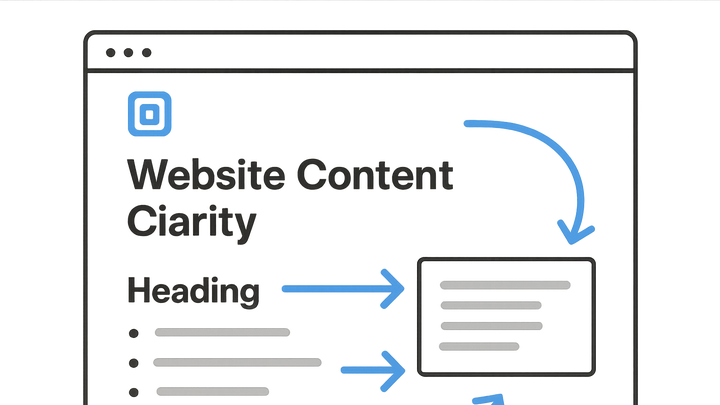Published on 2025-06-29T20:28:38Z
What is Content Clarity? Examples of Content Clarity in Website CRO/UX/SEO
Content Clarity refers to how easily users can understand and act on information presented on a website. It encompasses language simplicity, logical structure, visual formatting, and accessibility best practices. Within Conversion Rate Optimization (CRO), clear content reduces friction and guides visitors toward conversion points. In User Experience (UX), it ensures users can find and digest key messages effortlessly. For SEO, well-structured, unambiguous content helps search engines index and rank pages more effectively. Platforms like Prevue.me provide actionable critiques to boost clarity for lead generation, accessibility, and overall engagement.
Content clarity
Presenting website content in an easy-to-understand, structured, and accessible way to optimize UX, CRO, and SEO.
Why Content Clarity Matters in CRO/UX/SEO
Content clarity plays a pivotal role in ensuring users can quickly find, understand, and act on information, directly impacting conversions, engagement, and search rankings.
-
Enhances user understanding
When content is clear, users can scan headlines and bullet points to locate relevant information without confusion or frustration.
- Scanability:
Use headings, subheadings, and bullet lists to break up text for quick scanning.
- Concise messaging:
Keep sentences and paragraphs short to maintain attention.
- Scanability:
-
Boosts conversion rates
Clear calls to action (CTAs) and benefit-focused language reduce ambiguity and encourage users to complete desired actions.
- Cta clarity:
Use direct, action-oriented language like
Download NoworStart Free Trial. - Value proposition:
Clearly communicate unique benefits above the fold.
- Cta clarity:
-
Improves seo performance
Search engines favor content that is well-structured and easy to interpret, leading to better indexing and ranking.
- Structured headings:
Use H1–H6 tags hierarchically to outline the page structure.
- Keyword context:
Place primary and secondary keywords in clear semantic context.
- Structured headings:
Key Components of Content Clarity
Effective content clarity relies on combining simple language, logical structure, consistent formatting, and accessibility best practices.
-
Plain language
Avoid jargon and complex vocabulary to make content accessible to a broader audience.
- Readability guidelines:
Aim for a 6th to 8th grade reading level using tools like Flesch-Kincaid.
- Readability guidelines:
-
Logical structure & hierarchy
Organize content with clear headings, subheadings, and paragraphs that guide the user through a logical flow.
- Content outlines:
Draft outlines before writing to ensure coherent progression.
- Content outlines:
-
Visual formatting
Use whitespace, bullet points, and typography to highlight key messages and improve legibility.
- Consistent styling:
Maintain uniform font sizes, colors, and spacing for headings and body text.
- Consistent styling:
-
Accessibility considerations
Ensure all users, including those with disabilities, can perceive and interact with content effectively.
- Alt text & aria labels:
Provide descriptive alt text for images and ARIA labels for interactive elements.
- Alt text & aria labels:
Measuring and Testing Content Clarity
Regular testing and analytics help validate that your content is clear and resonates with your audience.
-
Readability metrics
Assess text complexity using indices like Flesch-Kincaid and SMOG.
-
User testing feedback
Conduct moderated sessions and surveys to gather qualitative insights on clarity.
-
Analytics and behavior data
Monitor metrics such as bounce rate, time on page, and heatmap interactions.
-
Automated critique tools
Use platforms like prevue.me to receive actionable critiques on clarity, lead generation, and SEO.
Best Practices for Maintaining Content Clarity
Adopt a continuous improvement approach by collaborating across teams and iterating on content based on data and feedback.
-
Write for the audience
Develop and reference user personas to tailor tone, vocabulary, and messaging.
-
Iterative content reviews
Schedule regular audits and stakeholder reviews to catch ambiguity early.
-
Consistent terminology
Maintain a shared glossary and style guide to ensure uniform usage across pages.
-
Cross-functional collaboration
Involve content strategists, designers, developers, and SEO specialists in the content creation process.
